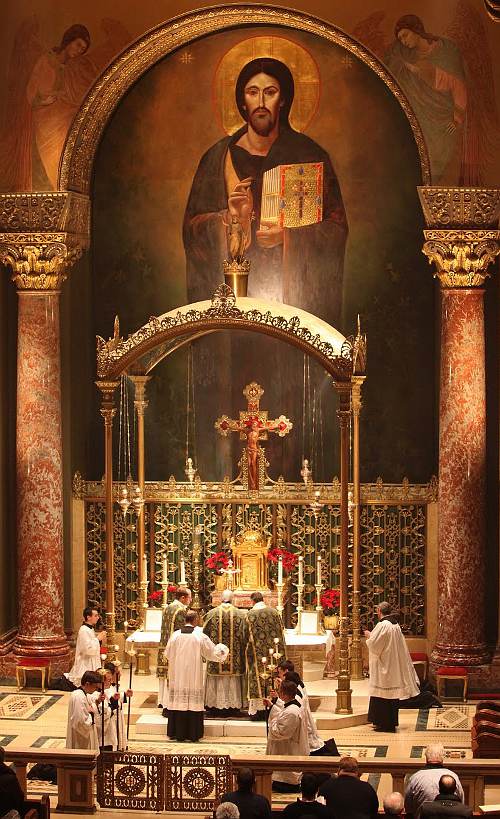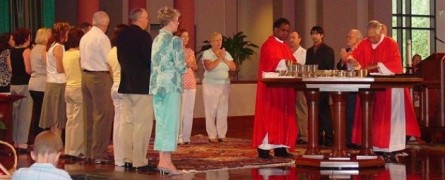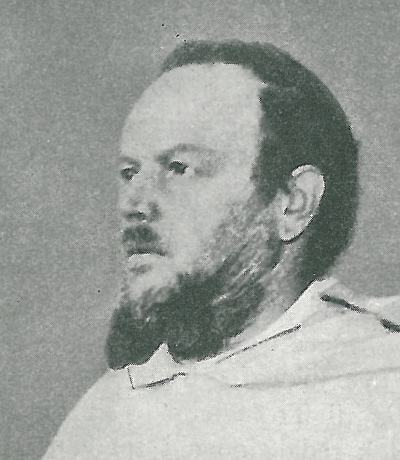Prestens ansiktsuttrykk og blikk
Michael Davies gir mange eksempler på klovnemesser o.l. i sin bok ‘Pope Paul’s New Mass’, men innrømmer også at disse jo bryter med de liturgiske reglene. Det er også klart for alle at grove brudd på liturgiske regler ikke lenger skjer på langt nær så ofte nå som på 70-tallet. Det jeg syns er viktigere i Davies’ bok, er der han beskriver hvordan de moderne liturgene beskriver hvordan prestene må begynne å feire messen på en annen måte; at fokus i mye større grad må være på menneskene som er til stede i messen (enn på Gud), og at dette i praksis betyr at det må være en kontinuerlig kontakt mellom presten og messedeltakerne gjennom aboslutt hele messen:
Father Hovda considers the facial expression of the celebrant to be crucial to a successful celebration-which virtually restricts «success» to good-looking extroverted presiders.
“It should not be necessary to say that absent-mindcdness or a far-away look in or on the presider are death to a worship assembly. It should not be, but it is … Good presidency mcans an effort to solicit the attention of each person in the assembly with one’s eyes, as well as with one’s general demeanor. To attend to anything else – even the book or the bread and wine – without attending to the persons present is the opposite of the style we seek.
One need not and one should not devour the congregation with one’s eyes. But there must be a constant exchange of interested, compassionate, encouraging looks, not only during reading and homily but also during song and prayer. The heavenward gaze (although there is nothing wrong with an occasional glance upwards if it fulfils a need) belongs to a view of the universe no longer with us. Our assembly gathers, conscious of the unseen and transcendent. But with our eyes we see, and what we see should be nothing less important than the people. Our brothers and sisters are the first sign of Christ’s presence, and the most important ones. “ …
The final paragraph of Father Hovda’s article makes explicit his belief that the Catholic concept of a cultic (sacrificing) priesthood has been replaced by that of a Protestant ministry: “These are, I think, important elements of the style and presence required of a good presider. Thoughtful readers will add others. Together we have to appreciate what Gregory Baum called the transition from a «cultic priesthood» to a «ministerial priesthood.» No longer «magical» persons, we are servants now, who must earn attention, respect, and cooperation. Our earning power is what we are talking about when we discuss style and presence. There is great satisfaction to be found in today’s ministry by men who are interested in being not stars but good servants.”





 Den latinske messen har nemlig gjenoppstått de siste årene. Bruken av det «gamle» gudstjenestespråket er blitt et tegn på at kirkelederne i Vatikanet gir økt og fritt spillerom for prester som liker tiden før langt bedre enn tiden etter Det andre Vatikankonsilet (1962–1965). …
Den latinske messen har nemlig gjenoppstått de siste årene. Bruken av det «gamle» gudstjenestespråket er blitt et tegn på at kirkelederne i Vatikanet gir økt og fritt spillerom for prester som liker tiden før langt bedre enn tiden etter Det andre Vatikankonsilet (1962–1965). …